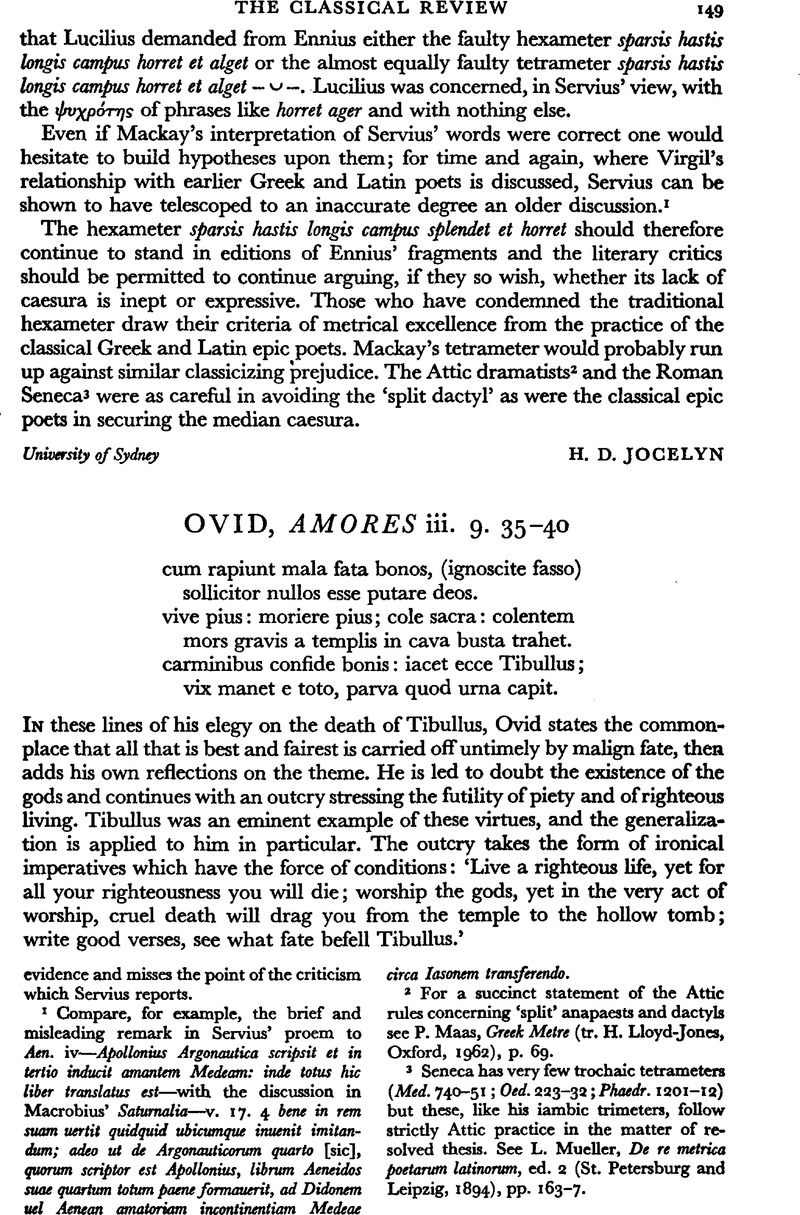No CrossRef data available.
Article contents
Ovid, Amores iii. 9. 35–40
Published online by Cambridge University Press: 27 February 2009
Abstract

- Type
- Review Article
- Information
- Copyright
- Copyright © The Classical Association 1965
References
page 149 note 1 Compare, for example, the brief and misleading remark in Servius' proem to Aen. iv—Apollonius Argonautica scripsit et in tertio inducit amantem Medeam: inde totus hic liber translatus est—with the discussion in Macrobius' Saturnalia—v. 17. 4 bene in rem suam uertit quidquid ubicumque inuenit imitandum; adeo ut de Argonauticorum quarto [sic], quorum scriptor est Apollonius, librwn Aeneidos suae quartum totumpaene formauerit, ad Didonem uel Aenean amatoriam incontinentiam Medeae circa lasonem transferendo.
page 149 note 2 For a succinct statement of the Attic rules concerning ‘split’ anapaests and dactyls see P. Maas, Greek Metre (tr. H. Lloyd-Jones, Oxford, 1962), p. 69.
page 149 note 3 Seneca has very few trochaic tetrameters (Med. 740–51; Oed. 223—39;Phaedr. 1201–12) but these, like his iambic trimeters, follow strictly Attic practice in the matter of redum; solved thesis. See L. Mueller, De re mttrica poetarum latinorum, ed. 2 (St. Petersburg and Leipzig, 1894), PP. 163–7.
page 149 note 1 This is the interpretation adopted by L. P. Wilkinson, who takes lines 37–40 as an example of ‘a double form of tricolon erescendo extending over two couplets’ (Golden Latin Artistry [Cambridge, 1963], p. 204. See also Ovid Recalled [Cambridge, 1955], pp. 39–40).
page 150 note 2 Cf. lines 33–34 and Tibullus i. 3. 23–26.




